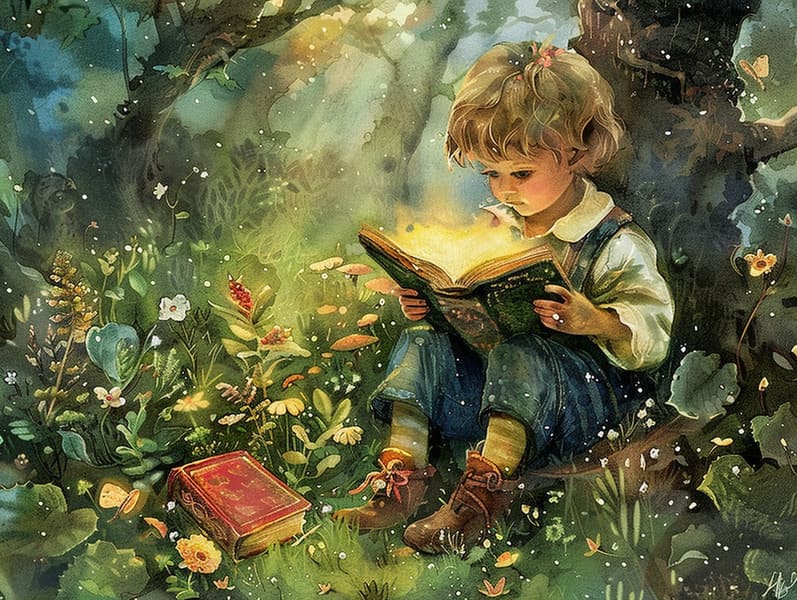The Origins of Fairy Tales to Read with Its Ageless Allure.
The Origins of Fairy Tales to Read with Its Ageless Allure.
Blog Article

Short fairy tales have enduring presence. These narratives have been transmitted from one generation to the next millennia before they were ever transcribed. They came from a variety of backgrounds, including Western traditions. They were initially shared among adults, often carrying themes and messages related to the societal norms and beliefs of the time.
Jacob and Wilhelm Grimm, the two Grimm brothers, were among the first to assemble many of these beloved stories. Their collection, "Grimm's Fairy Tales," included tales like "Cinder Maid," "Little Brother and Little Sister," and "Snow White," which have since become essentials in the world of traditional fairy tales. Similarly, H. C. Andersen's fantastical narratives, such as "The Mermaid," and "The Story of the Ugly Duckling," have captured hearts worldwide, guaranteeing their place in the pantheon of classic fairy tales.
Though they are centuries old, classic fairy tales remain as impactful as ever, especially as nighttime stories for kids. These fantastical tales are now available in numerous formats, including richly illustrated books, captivating animations, and web-based fairy tales.
Their lasting appeal can be ascribed to several whimsical characteristics:
Key Lessons: Ancient fairy tales often illustrate important moral lessons. Narratives like "The Tale of the Boy Who Cried Wolf" teach the virtue of truthfulness, while "The Tortoise and the Hare" illustrate the virtues of perseverance and humbleness. These tales offer young ones clear distinctions between moral and immoral, building their moral compass in a gentle yet significant way.
Compassion and Knowledge: Fairy tales frequently depict heroines facing struggles and tests, prompting kids to empathize with their struggles and support their triumphs. For instance, "Beauty and Her Beast" teaches us the virtue of appreciating inner worth to realize the inner core of a character, nurturing understanding and recognition.
Cultural Comprehension: Many fairy tales are deeply ingrained in the cultural contexts from which they grew. Immersing in these stories can provide intriguing perspectives into different heritages, encouraging a sense of world awareness and comprehension.
Imagination and Creativity: The extraordinary elements in fairy tales—supernatural elements—engender children’s dreams. These narratives move readers to extraordinary realms, encouraging fantastical thinking and a sense of astonishment that continues a lifetime.
Timeless fairy tales are not only mesmerizing but also informative. They work as whimsical tools in fostering various mental and emotional abilities in young readers. When classic fairy tales are narrated, they boost language acquisition by bringing new language and elaborate sentence structures. This practice also strengthens hearing abilities and focus, as the young keep up with the story, keen to see what happens next.
Furthermore, debating the themes and characters of traditional fairy tales can enhance thinking skills and evaluative skills. Little ones are led to see patterns, guess what will happen, and realize cause and effect. These talks also assist children voice their thoughts and feelings, nurturing their emotional intelligence.
In today’s technological age, the availability of online fairy tales has made these stories more obtainable than ever. Web platforms and digital apps make available huge assortments of children's fairy tales that can be enjoyed or listened on anytime, anywhere. Fairy tales voiced are particularly well-received, providing an engaging way for young readers to be a part of these captivating stories. Narrated books and read-out-loud videos take characters and settings to life, often complemented by magical melodies and instrumentals that boost the story journey.
The timeless charm of timeless fairy tales lies in their ability to adapt to current times while staying true to their fundamental ideas. Contemporary retellings of these narratives often include more different protagonists and modern settings, making them relevant to today’s audience. However, the central morals of gallantry, humanity, and fair play remain unchanged, continuing to affect children of all ages.
Traditional fairy tales also offer a sense of comfort and familiarity. They yield a structured narrative with a recognizable beginning, middle, and end, often finishing with the culmination of conflicts and the triumph of righteousness over wickedness. This certainty can be relieving for little ones, gifting a sense of dependability in an fluctuating world.
Old fairy tales continue to fascinate and edify new generations, maintaining their loveliness and relevance in modern society. As children's bedtime stories, they furnish a perfect blend of charm and enlightenment, promoting moral values, empathy, and creativity. The existence of internet fairy tales and the prevalence of fairy tales voiced promise that these ancient stories online fairy tales for free remain available to new generations.
By upholding and disseminating these stories, we continue to acknowledge the rich tapestry of tales and cultural heritage. Whether you are reading a beautifully illustrated book, enjoying a web-based collection, or listening via an audiobook, the grandeur of ancient fairy tales is always within reach. These fairy tales convey of the immortal presence of storytelling and its ability to unite us across centuries and lands.
Even if you are seeing a richly illustrated book, perusing a virtual library, or playing an narrated book, the appeal of ancient fairy tales is always within reach.
These tales illustrate of the unchanging power of fairy tales and its ability to unify us across centuries and lands, forming a connection that fascinates and enlightens alike.